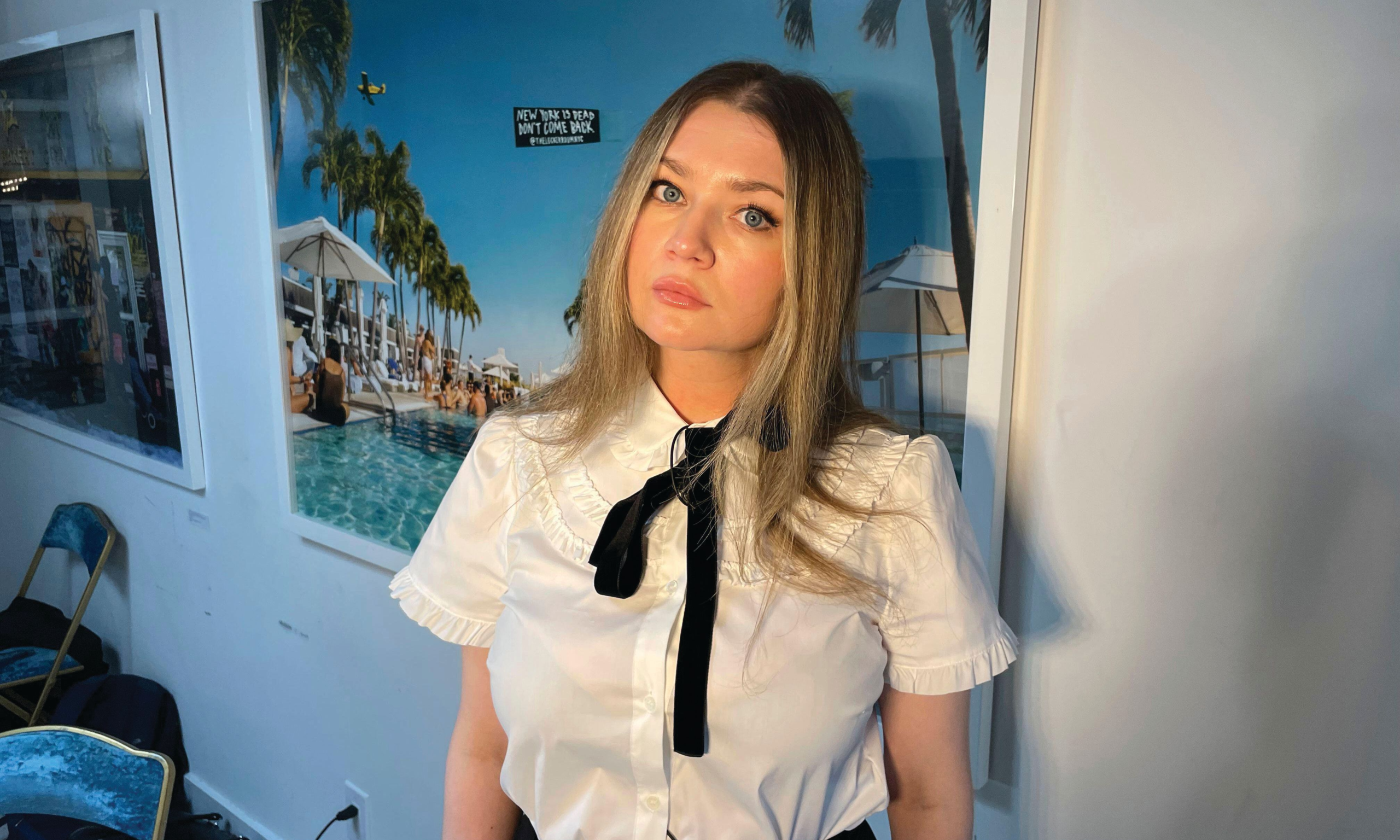Anna Delvey, realname Anna Sorokin, was the subject of the hit Netflix series "Inventing Anna" © Associated Press / Alamy Stock Photo
Art crime has long provoked heated debates about ethics and best practices in the trade. But those discussions are expanding and intensifying now that multiple convicted art fraudsters have become the focal points of high-profile streaming series and documentaries from major producers.
HBO and the producer Bad Wolf announced in April that they are developing a new series about Inigo Philbrick, adapted from All That Glitters, a memoir by his former friend and fellow Goldsmiths (University of London) alumnus Orlando Whitfield. Philbrick, who first built a reputation as a legitimate dealer in London while working for White Cube founder Jay Jopling, pleaded guilty in New York to federal charges of wire fraud in 2021 stemming from illicit transactions made after opening his own commercial gallery; he served nearly four years in prison before being released this February. His story is also being told in a forthcoming three-part documentary from the BBC and Blue Ant Media, made with the involvement of Philbrick and his wife, Victoria Baker-Harber.
Another example drawing attention is Netflix’s 2022 miniseries Inventing Anna. Its nine episodes dramatised the story of the “Soho Scammer” Anna Delvey (real name: Anna Sorokin), who was sentenced in 2019 to four to 12 years in prison for grand larceny and theft charges linked to her time posing as a wealthy heiress in the art world. The series racked up more than 500 million hours streamed during the first 28 days after its debut.
So, in a world where an ex-president can run for re-election in the US after a criminal conviction and art frauds can lead to a hit Netflix series, where are the boundaries between crime and compensation—and who monitors them?
From an ethical perspective, the notion of profiting from crime has long been problematic. Paying convicted individuals for their stories—whether through book contracts, film and TV adaptations or speaking engagements—raises questions about whether they are being rewarded for their misdeeds. Such deals also threaten to undermine the integrity and reputation of the industries the perpetrators exploited.
Courts are increasingly recognising the broader damage that can be inflicted in art crimes, too. Although the art trade’s rarefied and opaque nature sometimes made it difficult for judges and juries to evaluate the true harm done in past cases, impact statements from the victims have been used more and more regularly of late to inform sentencing.
“Twenty years ago or so, courts were less educated on the art market, but this is shifting,” says Georges Lederman, a special counsel at the law firm Withersworldwide. “As the system becomes clearer on the devastating impact of white-collar crimes, we have seen examples of harsher sentences on perpetrators who have had clear advantages (in terms of wealth and circumstances) and who go on to abuse that trust.”
In a market built upon relationships and good faith, the impact of deception can be profound and enduring. “When it comes to fraud—and the art market is no exception—there is no such thing as a victimless crime,” says Judd Grossman, a lawyer for multiple victims who brought civil lawsuits against Philbrick. He describes the announcement of the HBO series, as well as the media’s extensive coverage of Philbrick post-release, as “wild”, since multiple victims are still struggling with the stress and, in some cases, the mounting costs of pursuing ongoing litigation against him.
Ethics aside, legal boundaries should arguably be clearer in both the UK and the US when it comes to the profitability of art fraudsters’ stories. Amanda Gray, a partner specialising in art law in Mishcon de Reya’s London office, says that deals for memoirs, TV and film rights in the UK should be governed by the Crown Prosecution Service’s Proceeds of Crime unit and the criminal injuries compensation scheme. Parliament’s Coroners and Justice Act 2009 also introduced a special provision empowering the state to recover so-called “‘exploitation proceeds’ from a relevant offence”, but Gray says she is unsure how frequently it has been applied.
In the US, meanwhile, some states have enacted what are known as “Son of Sam” laws to prevent criminals from profiting from the publicity their crimes attracted. Named after the infamous serial killer David Berkowitz, who New York legislators sought to prevent from selling his story in the 1970s, these statutes generally require that any proceeds from convicted criminals’ deals for memoirs, movies or other media be redirected to either the individual victims or a victims’ compensation fund.
Yet numerous legal challenges have been mounted against these laws over the decades. One led the US Supreme Court to rule in 1991 that New York’s “Son of Sam” statute was unconstitutional due to its overbroad application and potential to violate the First Amendment by significantly hampering free speech. Historically, judgements have also varied as to whether such laws apply to perpetrators’ close friends and family, who may also financially benefit from the sale of their stories.
More typically, courts in the US manage the repayment of outstanding losses to victims via restitution orders made during sentencing. Although these orders can continue beyond the perpetrator’s release from prison and apply to ongoing income, Lederman says he has “never seen a restitution order fully satisfied”.
Restrictions on the media and its coverage of true crime are similarly varied. Trade codes of conduct tend to emphasise the need not to “incite” crime. But in reality, the public’s fascination with, and appetite for, true crime material has never been stronger. Google searches for “Netflix serial killers”, for instance, were up 45% year on year in 2022. If changes to the system are desired, they may well need to start with consumers.

